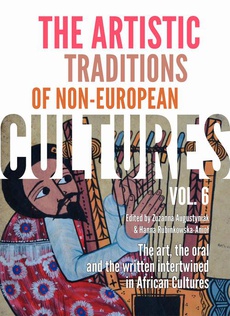INNE EBOOKI AUTORA

-17%
Homicide in the Family
Autor:
Format:
pdf, ibuk
Książka jest monografią poświęconą zagadnieniom przestępstw ze szczególną uwagą skierowaną na przestępstwa dokonywane w rodzinie. Całość w języku angielskim.
| Rok wydania | 2010 |
|---|---|
| Liczba stron | 393 |
| Kategoria | Psychologia ogólna |
| Wydawca | Wydawnictwo Uniwersytetu Kardynała Stefana Wyszyńskiego |
| ISBN-13 | 978-83-7072-631-7 |
| Numer wydania | 1 |
| Język publikacji | polski |
| Informacja o sprzedawcy | ePWN sp. z o.o. |
POLECAMY
Ciekawe propozycje
Spis treści
| Chapter I. Homicide and aggression in the history of mankind | 11 |
| 1.1. Homicide and aggression in the individual and social experience | 11 |
| 1.2. Aggressive behaviour in the legal system of the Old Testament | 13 |
| 1.3. The male – female relationship as a source of potential aggression | 16 |
| 1.4. Politically and religiously motivated homicides | 22 |
| 1.5. Aggression towards the enemy defeated in a war | 23 |
| 1.6. Warfare, women and male murderers in the ancient world of Herodotus | 27 |
| 1.7. Aggression and violence in the medieval and modern Europe | 30 |
| 1.8. The assessment of a woman in the early Christianity and the Middle Ages | 36 |
| 1.9. Hypotheses on the state of nature in the Age of the Enlightenment | 41 |
| 1.10. The 19th-century views and the modern pacifism | 42 |
| 1.11. Summary | 45 |
| Chapter II. The scale of offences against life and health | 48 |
| 2.1. Offences against life in Poland and other countries | 48 |
| 2.2. Homicide in the family | 50 |
| 2.3. Characteristic features of homicide within the family | 52 |
| 2.4. Summary | 56 |
| Chapter III. Selected theories on crimes committed by men and women | 59 |
| 3.1. Contemporary male and female crime | 59 |
| 3.2. Selected theories on male and female crime | 60 |
| 3.3. Personality-related determinants of crime | 65 |
| 3.4. Strain theory as an attempt at interpreting interpersonal aggression | 67 |
| 3.5. The significance of gender in explaining homicide causes | 69 |
| 3.6. Summary | 78 |
| Chapter IV. Domestic violence and its connection with homicide | 82 |
| 4.1. The legal and psychological conceptions of violence | 82 |
| 4.2. Relations and partnership connections between the perpetrator and victim | 86 |
| 4.3. The strategies of dealing with violence | 92 |
| 4.4. Theories explaining the mechanisms of violence | 96 |
| 4.5. Summary | 101 |
| Chapter V. The psychological approach to aggression and violence | 103 |
| 5.1. The modern psychological approach to aggression and violence | 101 |
| 5.2. Destructive and hostile aggressive behaviour as a motive for homicide | 111 |
| 5.3. Summary | 117 |
| Chapter VI. Motivation for homicide | 120 |
| 6.1. The definition of motivation and the difficulties in tracing the motivational process | 120 |
| 6.2. The discharge of emotions in relation to aggressive behavior | 124 |
| 6.3. The two-level system of structures controlling and regulating emotions | 125 |
| 6.4. Summary | 127 |
| Chapter VII. Male and female homicides in criminological and psychological research | 130 |
| 7.1. Case analysis as a method of research | 130 |
| 7.2. The victimological approach | 132 |
| 7.3. Situational factors | 134 |
| 7.4. Abnormal socialisation and its importance in the aetiology of homicide | 135 |
| 7.5. The cognitive functioning of killers | 138 |
| 7.6. Psychological studies of the perpetrators’ personality | 139 |
| 7.7. Mental health of the killers | 145 |
| 7.8. A tentative typology of the most common motives for homicide | 147 |
| 7.9. Situational factors as motivational background for homicide | 149 |
| 7.10. A tentative typology of perpetrators | 157 |
| 7.11. Conclusion | 166 |
| Chapter VIII. Research aims and methodology | 168 |
| 8.1. Validation of the relevance of the current study | 168 |
| 8.2. Aims of the study | 172 |
| 8.3. Material and methodology | 173 |
| 8.4. Description of the research material | 175 |
| Chapter IX. General characteristics of the subjects | 178 |
| 9.1. Preliminary characteristics of the subjects – the conditions and course of socialization | 178 |
| 9.2. Organic determinants and their influence on the subjects’ functioning | 188 |
| 9.3. Test results | 189 |
| 9.4. The influence of situational factors on the aggressive act of homicide and the type of motivation | 202 |
| Chapter X. Comparative analysis of male and female killer groups | 208 |
| 10.1. Conditions and course of socialisation of males and females | 208 |
| 10.2. Organic factors | 212 |
| 10.3 Comparison of male and female killer groups with respect to intensity of central nervous system damaging factors and their consequences for cognitive changes and certain personality dispositions | 213 |
| Chapter XI. Comparisons of psychological test results of the two groups | 218 |
| 11.1. IQ tests results | 218 |
| 11.2. Male and female killers personality assessment | 219 |
| 11.3. Results of Buss-Durkee Hostility Inventory (BDHI) | 222 |
| 11.4. System of values. Interpersonal attitudes in the male and female killer group | 226 |
| 11.5. Summary | 241 |
| Chapter XII. Impact of situational factors on homicide motives | 245 |
| 12.1. The situation as a wider motivational background of homicide | 245 |
| 12.2. Types and frequency of motives | 258 |
| Chapter XIII. Homicide motivation in the light of statistical cluster analysis | 275 |
| 13.1. Cluster analysis – distribution of motives | 275 |
| 13.2. Clusters of dominant and coexisting motives in the isolated groups | 280 |
| 13.3. Individual and group activity in the isolated clusters | 291 |
| 13.4. Male and female killers in the isolated clusters | 293 |
| Chapter XIV. Correlation of motives with personality dispositions | 295 |
| 14.1. Correlation of motives with intelligence | 295 |
| 14.2. Motivation and personality – MMPI | 299 |
| 14.3. Personality variables – Buss-Durkee Hostility Inventory Results | 302 |
| 14.4. SUI interactions and emotional attitudes in the isolated clusters | 305 |
| 14.5. Hierarchy of values in the isolated clusters on the basis of the Rokeach Value Survey | 308 |
| Chapter XV. Summary and conclusions | 315 |
| 15.1. Verification of basic assumptions and hypotheses of the work | 315 |
| 15.2. Significant results obtained in the study | 318 |
| 15.3. Personality differences between the groups of males and females | 320 |
| 15.4. Homicide motives in the female and male group | 322 |
| 15.5. Motive cluster analysis in the two groups | 323 |
| 15.6. Correlation of the isolated motives with certain personality dispositions | 325 |
| 15.7. Conclusions | 326 |
| 15.8. Scientific and practical value of the results | 328 |
| 15.9. Conclusion | 329 |
| Appendix I – Case studies | 331 |
| Appendix II – Tables | 351 |
| Bibliography | 365 |
























